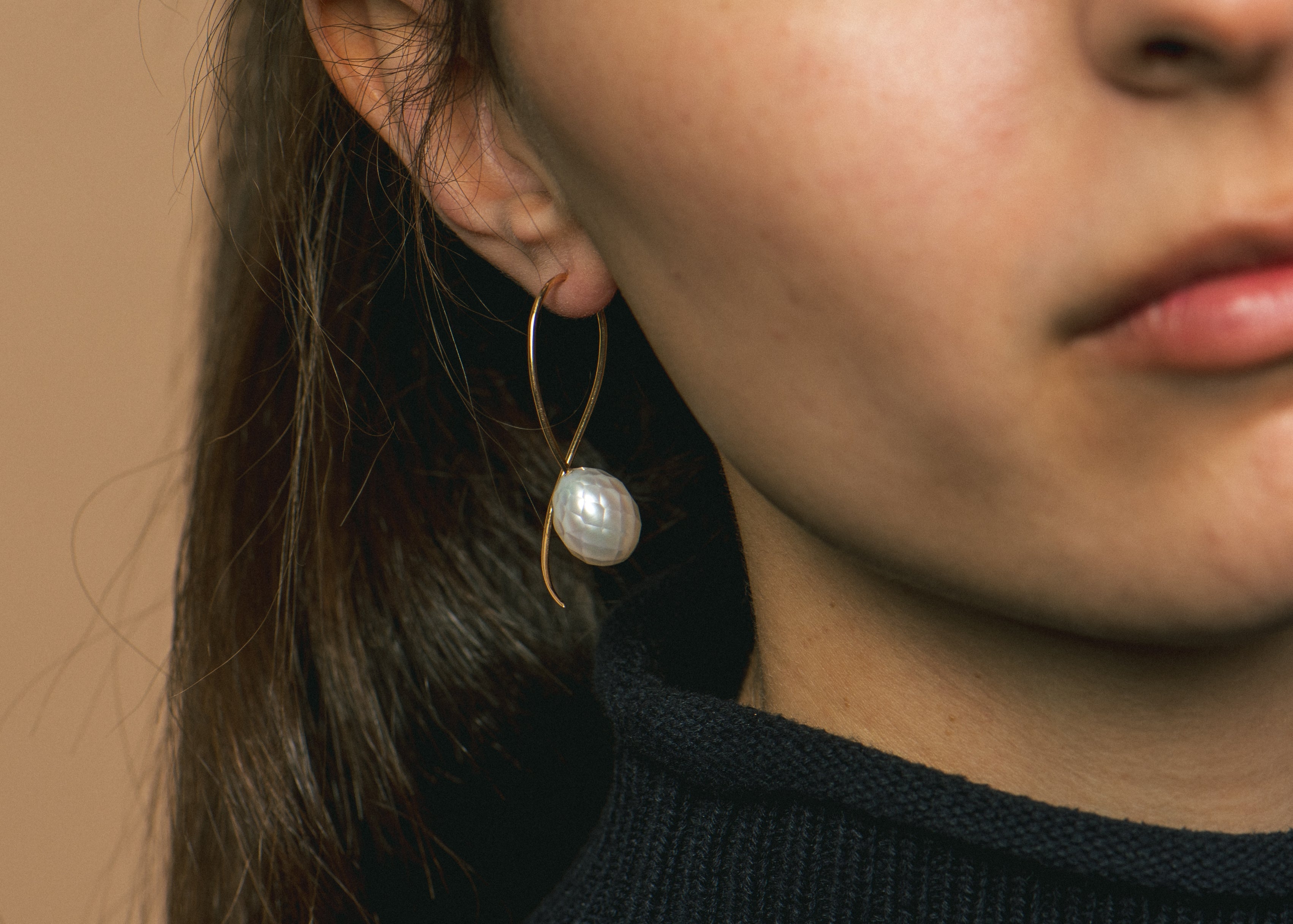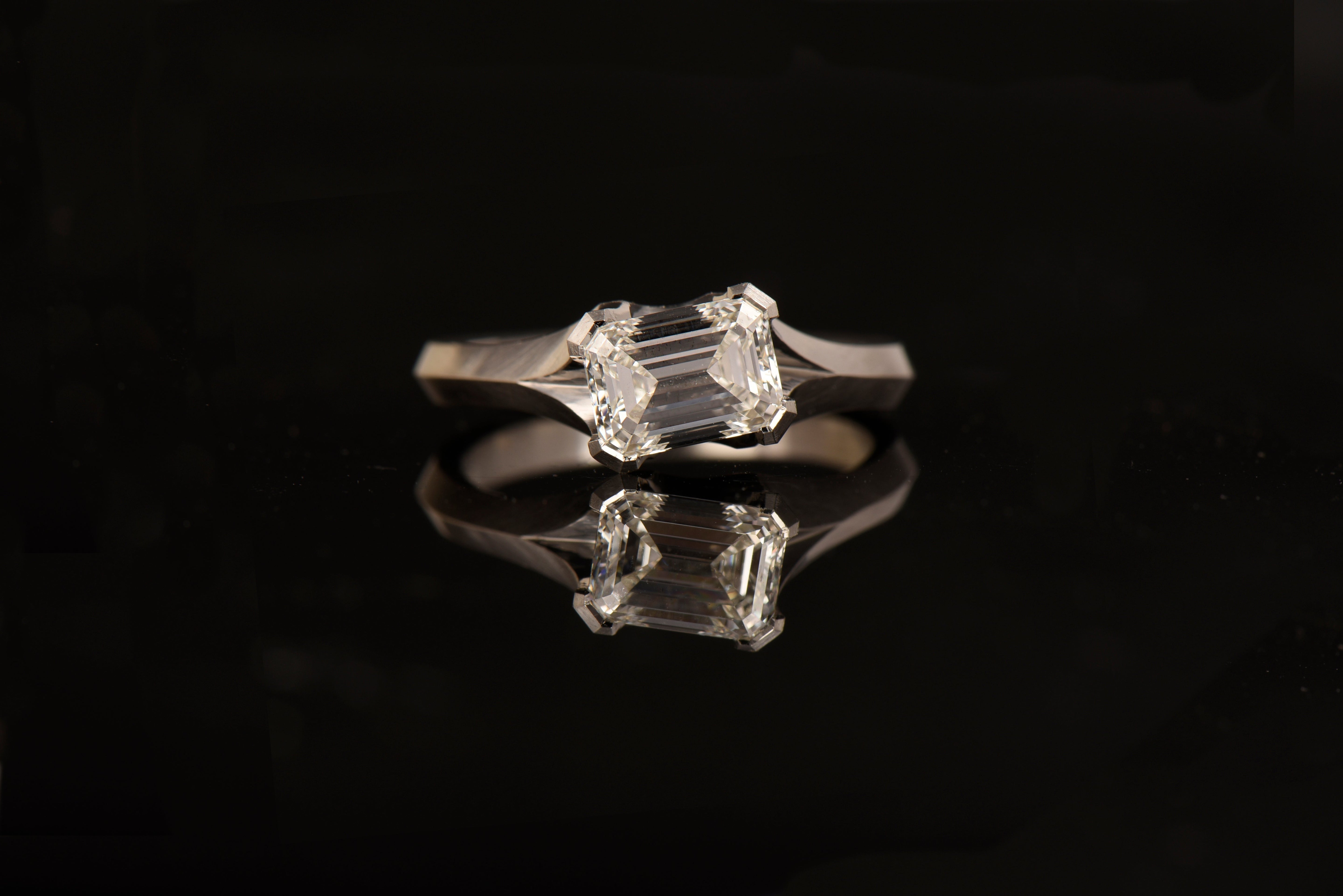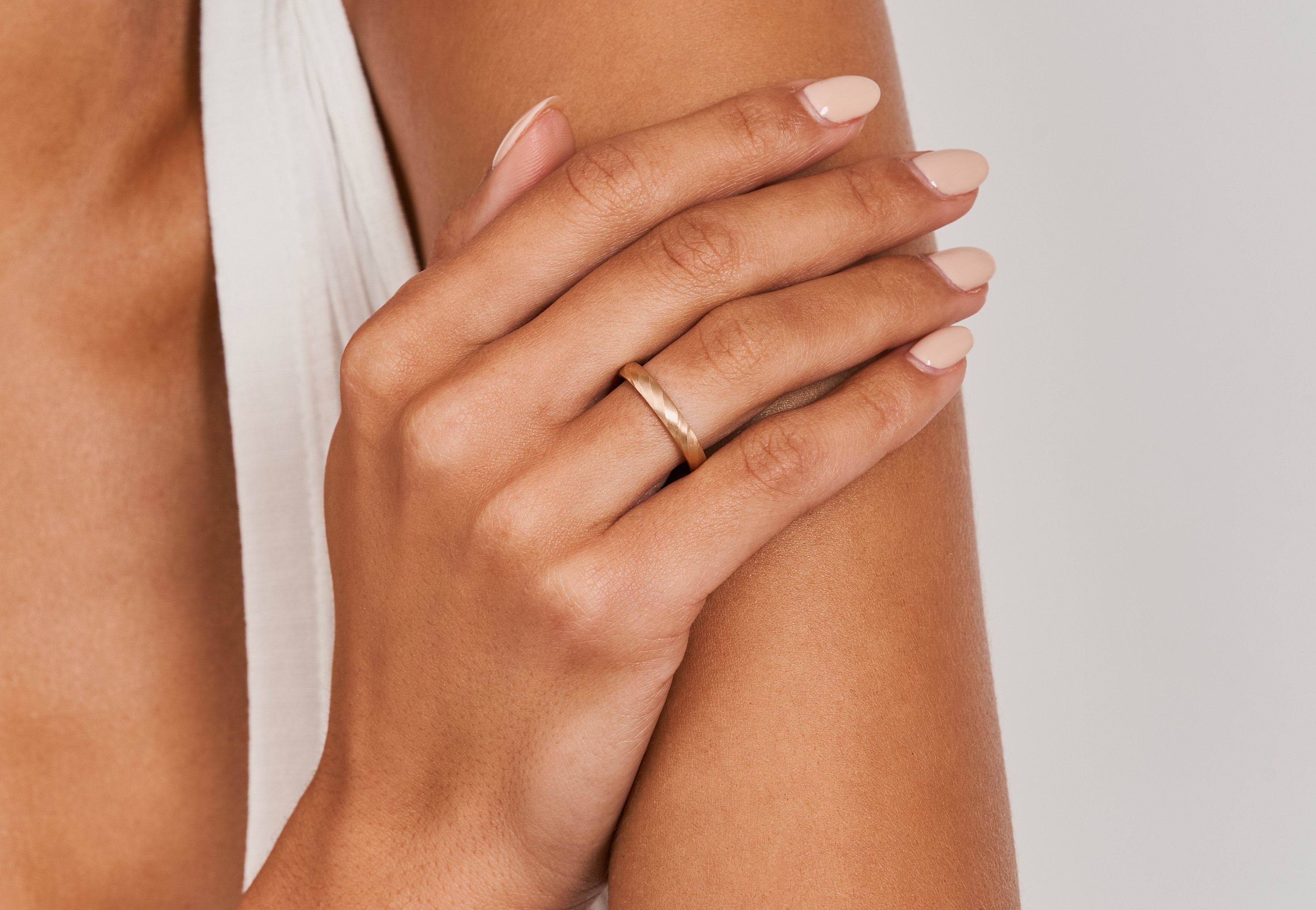
What are faceted pearls and how are they made?
At McCaul Goldsmiths' we enjoy using unusual shapes and gemstones in our jewellery. If you have walked past one of our shop windows or browsed our website for earrings you may well have spotted some of our faceted pearl earrings. There are a truly unique material to work with and very unusual to see available to buy.
But what is a faceted pearl and how are they made?

For thousands of years pearls have been desired, from the Romans, to the Ancient Chinese and more recently by style icons such as Coco Chanel. It wasn't until 1998 that pearl lovers first saw a faceted pearl, after many years of experimentation, time and patience the first faceted pearls with up to 200 facets were a break from tradition.

We work with a supplier who will only facet the very highest quality pearls, any marks on the surface of a pearl will still be visible after faceting so this should be avoided. The pearls should also have a good lustre, the pearls have no coating or enhancement to the surface so having a good lustre really shows in the finished pearl. We think that this quality really shines through. These are some of our favourites at the moment.

Each pearl is carefully faceted by hand using diamond cutting tools and processes which are the same as if you were faceting a gemstone. It is this process that enhances the natural beauty and characteristics of the individual pearl.
So it is with the best quality materials, being highly skilled and using the age old skills of gemstone faceting that you are able to create these stunning and unique gems.

But where do the pearls themselves come from?
Pearls come from all over the world but we select our suppliers carefully. Like something from a holiday brochure this is just one of the locations that our Tahitian pearls are sourced from.

image courtesy Marc Harit
The large majority of pearls available today are cultured, although still a natural process, the pearls are encouraged to grow by those who farm them. This is achieved by inserting a small bead into a mollusc as a seed, from which the pearl grows. The mollusc creates layers of a substance called nacre around the seed, the longer that the mollusc is left alone the larger the pearl will become.
When the microscopic layers are of a good quality they will reflect light and the pearl with appear to glow from within, this glowing is often called a pearl orient. Good quality pearls are often the result of a good environment, many areas will reduce pollution and put restrictions on the amount of pearl farming that can be carried out to ensure that the environment is respected and cared for and that local farmers are also treated fairly.


images courtesy Marc Harit
Come in and have a closer look at our faceted pearls when you are next near our London of Dublin ateliers. Or contact us to find out more about our faceted pearl jewellery.

